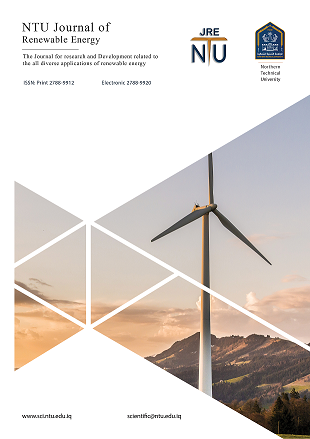Influence of Micro-Controller-Based Single Axis Solar Tracker System on Solar Panel’s Performance: Case Study
DOI:
https://doi.org/10.56286/ntujre.v3i1.347Keywords:
Single Axial Solar Tracker System (SASTS), Arduino Uno board, LDR, Photovoltaics, Servomotor, Solar Panel, MATLAB SimulinkAbstract
There is governmental, academic, and business interest in new emerging renewable energy sources, such as solar energy. In particular, how and how much it produces energy and the environmental impact of these sources. To highly benefit from renewable energies, new methods should be utilized. In this paper, the Microcontroller Arduino Uno board has been used and programmed by Arduino software to build a system as a photo-sensor (Active) Single Axis Solar Tracker System (SASTS). The system was created using a solar panel, two Light Dependent Resistance (LDR) have been used on the two sides (north/south) of the photovoltaic (PV), and a servo motor is connected to the Uno board. The tracking system is constructed to procure the data using the Microcontroller Uno board and specially designed mechanical base. Based on the extracted results, the influence of the SASTS on increasing the solar panel performance is more evident than the outcome Maximum Power Point (MPP) of MATLAB Simulink. Continuously, the SASTS searches for the sun and its position in the sky and puts the PV direct to the sun. Significantly, the tracker system raises the power ratio of the PV. As a result, it significantly increases the solar panel's performance and increases by 55.2% on average during the daytime.
Downloads
Published
Issue
Section
License
Copyright (c) 2022 NTU Journal of Renewable Energy

This work is licensed under a Creative Commons Attribution 4.0 International License.








